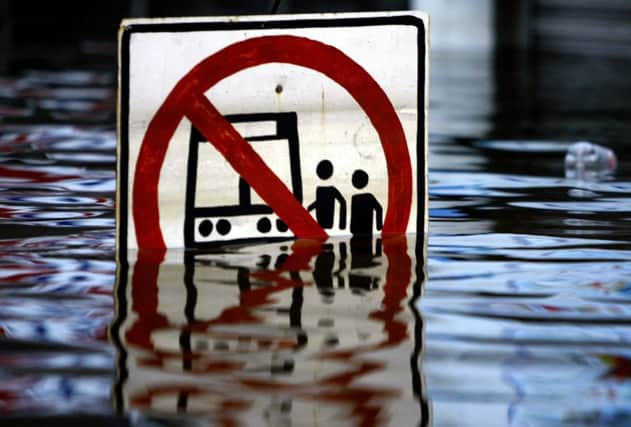Mexico faces fresh flooding threat


He gestures further on down the hill, to a rough barrió called Santa María Aztahuaca. “And they end up living under a lake.”
Thanks to successive waves of economic migration from the 1970s onwards, Iztapalapa is the fastest-growing and most populous borough in Mexico City.
Advertisement
Hide AdAdvertisement
Hide AdIt is also dogged by the city’s highest rates of murder and kidnapping. Added to this are persistent problems with flooding.
Last September, parts of Iztapalapa were inundated by up to five feet of water. Around 3,700 homes flooded, leaving 15 dead.
While the government did send in drainage trucks, their efforts were divided by relief efforts in Acapulco, where 56 people died during tropical storm Manuel. With Veracruz under 40cm of water and states of emergency declared in Chiapas and Tabasco states, residents fear their borough will again fail to be a priority for flood relief.
Taxi driver Jorge Chávez said: “The rainy season used to start in June and end in October. Since around three, four years ago, it’s more like April to November.”
Iztapalapa was the site of a cholera epidemic in the 19th century. That spectre has been raised again by the worsening floods, with ten cases of the disease reported last year.
Mr Chávez says the health kits distributed by the government last year consisted of toothbrushes, shampoo and soap.
In Santa María Aztahuaca, the effects of flooding linger. Some houses have replaced outer walls with concrete pegs taken from building sites.
The homes are simple concrete structures, but the 20,000 pesos (about £900) cost of repairs is beyond many.
Advertisement
Hide AdAdvertisement
Hide AdThe nearby town of Las Cabras perches high up on steep slopes of terraced rock. New arrivals pile up in precarious shacks made of breezeblocks and corrugated sheeting.
These new constructions are vulnerable to deadly landslides: one resident, who did not wish to be named, points at one which had been repaired. “A baby died there,” she says.
“Rocks came loose and fell through the roof. That was five years ago. Nobody did a thing. It was left up to us to go on.”
While the city government last year announced an £8.8 million drainage scheme for the whole of Mexico City, residents from Las Cabras fear no financial support will be given to their area, because the government does not wish to be held responsible should it fail.
The authorities counter with the charge that residents ought to take greater responsibility for their area, given 50 tonnes of solid waste were removed from blocked drains in Iztapalapa during last September’s floods.
“Well, they really shouldn’t be there. That’s the real problem,’ said Alejandra Boite, a local government spokeswoman. “The drainage in this type of housing is not up to standard, and people are not educated around the importance of safe waste disposal.”